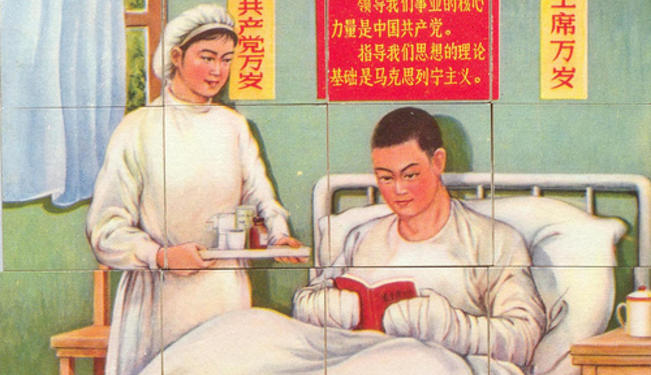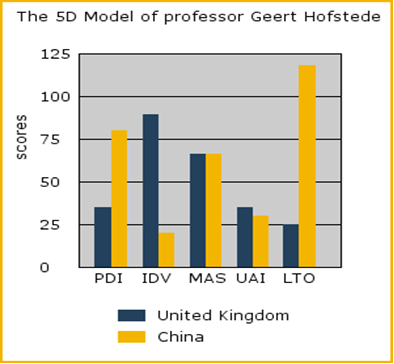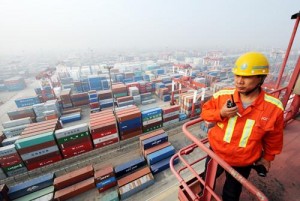Posts Tagged ‘China’

While there is a consensus amongst authors regarding rapid hegemonic rise of China opinions divide about sustainability of this tendency in long-term or even medium term perspectives. On one hand, there are authors such as Zhang (2012), Sobel (2012) and Joseph (2013) who express firm belief about the sustainability of Chinese hegemony. This group of authors refer to the strong competitive advantage of economy of China that is expanding beyond the cost advantage of resources to compete with producers from developed countries on quality levels. On the other hand, a range of authors such as Catley and Mosler (2007), Balogun (2011) and Nye (2011) adopt a sceptical approach about sustainability of hegemony of China in long-term perspectives. This specific group of authors justify their stand by stating that China’s hegemonic rise is directly conditioned by its volume of exports, and sustainability of volume of export depend on a wide range of internal and external factors that are becoming increasingly volatile. Nevertheless, the literature review has found a set of political, economical and social factors that contribute to the rise on the level of hegemony of China. Each of these factors is discussed below in greater details. Political Factors Political factors contributing to the rise of China’s hegemony are closely associated with damages to the reputation of present world hegemon – the USA through unsuccessful engagement in a series of foreign wars (Catley and Mosley, 2007, Zhang, 2012, Joseph, 2013) and a range other factors discussed below. Zhang (2012) argues that financing overseas wars in Iraq, Afghanistan, and Libya is draining national economy of the USA. Moreover, eagerness of the US President Barack Obama to initiate military engagements in Syria is most likely to have highly detrimental impacts on the level of national economy. Moreover, US government sponsors a range…

According to the report published by the Chinese Ministry of Health (2002), it is said that the provision of health care services in the country is based on three-tiered system. While in rural areas the village health stations, town’s central hospitals and county hospitals form the three tiers, in urban areas the three tiers consist of neighbourhood health clinics, district hospitals and municipal hospitals. Dib et al (2009) note that this three-tiered system is aimed to ensure the efficient and effective provision of health care services while creating trusts and closer relationship between patients and doctors. As a first point of contact for patients, the health institutions at the lower level of the tier are designed to provide prevention and primary health care services. In practice, the private clinics account for majority of these low-level health instructions as they provide primary care services, health check-ups and cure minor diseases. On the other hand, county and municipal hospitals at the upper level of three-tiered system provide impatient, outpatient and emergence care services to the patients referred from lower level health institutions and hospitals (Chen Xiaohong, 2007). However, Yu Guangjun et al (2007) argue that this vertical structured three-tiered system itself is the one of the key reasons behind the failure of the Chinese health care system. The difficulty in getting transferred from low-level health institutions and obtaining access from hospitals at the top level of hierarchy due to long-waiting lists for registration and treatment, unnecessary long bureaucratic processes pinpoint the difficulties faced by patients, particularly in rural areas. Moreover, given the huge size of country’s population, the author argues that lack of trained doctors and health care professionals, shortage of medical equipments and facilities further diminish the ability of hospitals and other health institutors to receive and treat the patients. On…

As the oldest living civilization, history of the Chinese medicine goes back to nearly two thousand years. The methods and theories of the Chinese medicine considered as one of the oldest in the history of medicine and they have been practiced and developed further over the centuries. However, as many scholars note, China did not have organized and centralized health care network system until middle of the 20th century. The health care services were mainly provided by small, private clinics, local, individual healers as well as some religious or charity institutions, while big central health care station, which could qualify as a hospital, mainly cared after royal family and served the needs high-ranking officials and military personnel. This highlights the fact that private clinics and practitioner had played significant role in the history and development of the Chinese health care system. The earliest contemporary hospitals began to appear in China from 18th century in the form of missionary hospitals run by western churches. According to the statistics cited by Meng Qingyue et al (2000), prior to the formation of Chinese Communists state in 1949, there were around 768 hospitals providing health care services in the country. While only 248 of them were government-funded, remaining 520 were private hospitals indicating the private sector dominated the provision of health care services throughout the history of Chinese health care system. However, following the arrival of socialism and foundation of communist state in 1949, the role of private sector in the Chinese health care has diminished significantly within very short period of time. Ministry of health, which was set up by the government as a responsible body for overseeing the provision of health care services and running of country’s health care network, soon began transferring private hospitals into public ones. The Cultural Revolution, which…

According to Hofstede’s model for cultural differences and analysis between China and UK, the following table has been produced in reference to the link provided. Adopted from: http://www.geert-hofstede.com/hofstede_dimensions.php?culture1=94&culture2=18#compare According to power distance index, the Chinese understanding of power distribution and inequality is more than two times higher than the UK expectations. This indicates that the Chinese team management style is inclined to one person in the organization to have higher power than others and that person is perceived to be in a higher position than others. And according to individualism aspect of the above table, theUKorganization culture tends to have more individualistic approach than that ofChina. This indicates that individualism is more developed inUKcompanies and team management than Chinese. The reaction to risk in both countries tends to be in a very similar level. However, in terms of planning, the UK culture indicates to have short term planning, whereas, the Chinese to be long term planning. Based on above analysis, it can be concluded that the following type of management would be most appropriate to operate the business unit effectively in China: The management style similar to autocratic, where management tends to have more power to run the company as collectivism is highly appreciated in Chinese organizations. This indicates that subordinates are happy to follow the leader. In terms of planning skills of management, a manager with long term planning goals should be most appropriate here as Chinese management and employees tend to think well into future. Gender does not make big difference as both countries tend to have same levels of approach to genders, according to table above. Therefore, a person who can work collectively with others, more challenging towards others and risk aware would be ideal for the manager position here. The person suitable for this position…

The “Open Doors Policy” or the economic reformations of the late 1970s in China enormously changed the entire economy of the country. The trade reformation which focused on liberalizing the trade which shifted the country a step closer to free market attracted huge foreign capital into the country in the form of FDI since 1978. The huge scarce resources of China had to be utilized soon after the reformations which indeed required huge capital. However,China heavily relied on the external funds in order to promote its manufacturing industry and the financing of newly privatized formerly state-owned companies. Therefore,China’s government issued series of policies which favoured the foreign investors. The inflows of foreign capital in the form of FDI brought in advanced technology, knowledge, management know-how which accelerated the economic growth in China in the last three decades. Since the “Open Doors” policy and trade reformations in the country in 1978, the country has been consistently achieving significant economic growth which averages at 10% of GDP. When the growth rate of China is compared to other developed economies such as USA which has an average of 3% GDP growth in the 100 years and Germany which has an average growth rate of 1.3% of GDP and Japan at 3.85% of GDP in the few decades, China is far ahead (IMF, 2009). However, many western policy makers and commentators believe that the main source of growth of China has been mainly due to FDI inflows which have been encouraged by fixed exchange rate. The source of economic growth of China is derived from three phases of development which are broken down into three periods of years. The first phase of development lasted from 1952-1978 where the Chinese government prioritized the development of heavy industries such as steel, chemicals and machinery. The second…

This article represents a brief analysis of diversification and expansion opportunities into Chinese market for a local restaurant and cafe in the UK. The article contains a brief overview of Chinese market, discusses market entry strategies available to the business, and discusses a range of most important factors impacting the business proposal. Overview of Chinese Market China is a newly emerging superpower, with the levels of GDP suppressing 72.1 trillion USD in 2011 (Statistical Yearbook, 2012) and the further increase has been forecasted with positive implications on the on the amounts of consumer spending. Currently, a set of multinational fast-food brands such as McDonald’s KFC, and Pizza Hut restaurants are increasing the level of their presence in an aggressive manner that can be interpreted as a signal for increasing level of demand in China towards foreign food and lifestyle. Market Entry Strategies Alternative market entry strategies the restaurant and café can employ in order to enter China consist of licensing, franchising, joint-ventures and wholly owned subsidiaries. Licensing involves local restaurants in China to trade under the license of the UK restaurant. This type of market entry offers the advantages of low risk and lower level of capital requirements. However, the disadvantages include limited scope of participation in operations, and lower potentials for generating significant revenues. Franchising is similar to licensing to a certain extent, but different in a way that it involves closer level of cooperation between the parties, and grants the right to a local business in China to use the logo and trademark of the restaurant in UK. Joint-ventures are another form of market entry available to the restaurant and café in the UK to enter China. The advantages of joint-ventures include shared risk and expenses, and gaining expertise in the local market. However, joint-ventures…

There are no universal learning and training principles that relate to all work situations and environmental settings in the same manner. In other words, there is a wide range of economical, cultural, political, legal, environmental and other factors that affect the formation and utilisation of learning and training principles within individual work situations and environmental settings. This paper is mainly concerned with the provision of learning and training in Chinese organisations in particular, taking into account a wide range of specific characteristics and circumstances associated with China and various forms of organisations operating in that country. The following table represents the key characteristics of HR training and development in various forms of ownership in China and a range of factors that have contributed to the formation of these characteristics are discussed further below. Government and civil service organisations State-owned enterprises Private enterprises Joint ventures and large multinational companies Training and development is provided at relatively high levels with increased focus on political studies Training and development is provided mainly to managerial, professional and technical staff The lowest level of formal training and development opportunities for employees compared to other forms of ownership High level of training and development opportunities provided to employees Table 1: Key characteristics of HR training and development in various forms of ownership in China Source: Storey (2011) The Economy of China and its Impact on Learning and Training Today China is seen by many as an emerging economic superpower with GDP growth of 10.45 per cent in 2010 and forecasts for growth of 10-12 per cent yearly for the next several years to reach 9,982.08 billion USD in 2015 (Economywatch, 2012, online). The main drivers behind dramatic economic developments in China are perceived to be important economic reforms that have enabled the utilisation of advantages…

The definition of a small-medium enterprise (SME) is most commonly based on the number of employees that usually with fewer than 500 employees; In China, the definition of an SME is complex, which depends on the industry category and based on the number of employees, annual revenue and total assets, and this criteria on small and medium-sized enterprises are based on the SME Promotion Law of China (2003), which sets the guideline for classifying SME’s. 1. The relevant size of the SMEs is significantly smaller than the large and listed companies inChinadue to the size of their capital stock, credit allowance.According to Guo and Li (2007) ,the Structural characteristics of SMEs in China are: However, in recent years, some SMEs have grown really large in size due to their continuous improvement and technological improvements. 2.>After the reformations of government legislations in 2005 for the favour of SMEs in China, nowadays, SMEs have been operating in different branches of businesses such as manufacturing, services, construction, transport and retailing. This support has helped the emergence of many more SMEs inChinawhich means there is even greater demand for financing all these SMEs. 3.> Small enterprises also make up huge proportion of SMEs in China which usually lack the degree of specialization and cooperation in the production areas. This is mainly due to the fact that there is lack of government legislations that supports and shows guidelines for SMEs inChina. 4.> The main market for SMEs is the domestic market of China which is due to the fact that SMEs can not cope with fierce competition in the international markets or does not have advantage over foreign-invested companies with high-tech. Due to shortage of funds, most SMEs operate mainly in labour-intensive small and medium industries as the technological progress is slow for them.…

There are vast differences between working life in UK and China that relate to many aspects of employment. At the same time there are still some similarities between the workplaces in above two countries as well. The main points relating to the differences can be summarised into the following three points: First, there are different perception of working hours in UK and China. In UK usually the working hours are fixed, and the cases of employees working beyond their working hours are rare, and even in these occasions they get paid for overtime. In China, on the other hand, although there are specific contracted hours for employees, nevertheless, the cases of employees staying beyond their contracted hours without additional payment are commonplace. Second, there are different management styles in UK and China. Specifically, in UK the majority of managers practice democratic and participative management styles, and assign a part of the decision making function to their subordinates, by involving them in decision making process. In an eastern country like China, on the other hand, managers have paternity and authoritative management style, and the occasions where employees are involved in decision making are not common (Wood, 2009). Third, there are differences in motivation between UK and Chinese managers. Financial rewards are considered to be one of the most effective motivational tools in UK workplaces. On the other hand, “while additional money may motivate Chinese employee, they will not generally demand rises directly. As members of collectivist society, the Chinese are more likely to see success or failure as a group effort, leading to group recognition and raises rather than individual rewards” (Silvermore, 2005, p.116). Fourth, there are vast differences in duration of employment between UK and China. In UK it is popular among employees to change companies every several years caused…

The importance of marketing has increased over the past several decades due to increasing rate of competition caused by globalisation, technological advancement, rising role of internet and other reasons. As a result, marketing has become an important aspect of the business for obtaining competitive advantage and therefore its main theories and principles are finding their wider applications. In other words, the necessity of marketing for businesses is confirmed by the fact that “businesses must sell products to survive and grow, and marketing activities help to sell their products” (Pride and Ferrell, 2008, p.16). This article critically analyses the importance of marketing in relation to the beverage industry in China through employing a range of marketing tools. Specifically the choice of marketing tools used to analyse beverage industry in China consist of marketing mix, PESTEL analysis and Porter’s Five Forces analysis. Marketing Mix Marketing mix can be defined as “a unique blend of product, place, promotion, and pricing strategies designed to produce mutually satisfying exchanges with a target market” (Lamb et al, 2008, p.44). In other words, effective strategies should be designed and implemented regarding all four components associated with a product or service – product, place, promotion, and pricing in order to ensure the sale of the product or service. This approach can be adopted by companies in beverage industry in China in order to ensure the success of the company in global level. A range of strategies are available managers in beverage industry in China can use to gain competitive edge regarding each component of the marketing mix. Product decisions China’s beverage industry managers can take in order to increase their market chare include the brand name of the beverage products, styling and safety of packaging, their expiry date etc. Marketing managers in beverage industry in China have…
